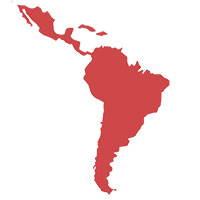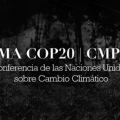Lima, The Heat Is On
admin | December 2, 2014.
After failure of the UNFCCC process itself in Copenhagen, the subsequent conference in Cancun needed to bring the patient back from life support and restore the faith in the multilateral negotiations. The Durban platform set up the pathway for Paris with the establishment of a deadline for agreement, as well as a blueprint for the Green Climate Fund (GCF), which has lacked adequate levels of financial support. At COP18 in Doha the parties adopted the concept of Loss and Damage, and enacted a makeshift second round of the Kyoto Protocol. Only two years out from COP21, pressure for progress was also felt in Warsaw, and discussions on climate finance and loss and damage struggled forward.
Where these past COPs differ from Lima is the feeling of immense energy within the climate community coming into the conference. This positivity stems from from the Climate Summit in September and the recent agreement between the United States and China over climate change mitigation. Parties have been reluctant to build too quickly; while broad foundations have been laid, we are yet to see substantive progress on the structure of a global agreement.
With the heat has both literally and figuratively turned up after Warsaw, Lima faces multiple pressures. Lima is the last time there will be serious wiggle room for the Paris to discuss the arrangement of the agreement. There will also be four intersessionals prior to COP21, however ministers are unlikely to attend these and their negotiators will likely be working within rigid and narrow constraints.
A major topic of speculation for Lima will be determining Intended Nationally Determined Contributions (INDCs), which are due in March. Lima is also the last chance parties have to discuss common accounting rules and finalise their mitigation targets. Foundations for the GCF also needs to be laid out in Lima as the world races towards a target of US$100 billion annually by 2020. Currently only $9.6 billion has been committed to, a far reach the fund’s ultimate goal. Additionally, there needs to be further progress on loss and damage, the details of which look set to spill into the negotiations next year.
The IPCC summary for policy makers from AR5, released in October, have only turned the pressure up for Lima. Inaction at this COP would have grave consequences for Paris as well as the planet. The journey has not been an easy one, and it will not be an easy path forwards. There is something in the air in Lima that is different than past COPs. The longer we wait, the higher the stakes, and the greater the price of a solution becomes.
If the urgency in the IPCC reports can’t spur action, the attendance of high profile figures such as Leonardo DiCaprio and Al Gore might. Paris is the deadline for an agreement. But if Lima fails, it will be even harder to ensure that Paris prevails.













comment